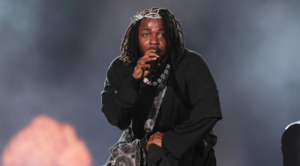Performing at the Super Bowl halftime show is a coveted opportunity for artists, offering unparalleled exposure to a massive audience. Despite this, the National Football League (NFL) does not pay performers an appearance fee for their halftime performances. Instead, the NFL covers all production costs and related expenses, which can amount to millions of dollars. citeturn0search0
Reasons for the Lack of Direct Payment:
- Unmatched Exposure: The Super Bowl is one of the most-watched television events globally, with viewership often exceeding 100 million. This vast audience provides artists with a platform to showcase their talent to both existing fans and potential new ones. citeturn0search0
- Boost in Music Sales and Streaming: Historically, artists experience significant increases in music sales and streaming numbers following their halftime performances. For instance, after the 2020 Super Bowl, Shakira saw a 230% spike in streams, while Jennifer Lopez’s music experienced a 335% increase. Similarly, after Justin Timberlake’s 2018 performance, his music sales rose by 534%. citeturn0search1
- Enhanced Career Opportunities: A successful halftime show can lead to increased demand for tours, sponsorships, and other business ventures. Artists often find that the heightened visibility translates into tangible financial benefits, even without a direct paycheck from the NFL. citeturn0search3
Production Costs and Artist Contributions:
While the NFL covers the substantial production costs associated with the halftime show, some artists choose to invest their own money to enhance the performance further. For example, The Weeknd reportedly spent $7 million of his own funds to ensure his vision for the 2021 halftime show was realized. citeturn0search0
Union Scale Payment:
Although artists do not receive a performance fee, they are compensated with union scale payments, which are minimum wages guaranteed by union contracts. According to Newsweek, this union payment stands at approximately $1,030 per day. citeturn0news16
Conclusion:
The decision not to pay artists directly for Super Bowl halftime performances is rooted in the mutual benefits for both the NFL and the performers. The NFL gains high-profile entertainment that enhances the spectacle of the event, while artists receive unparalleled exposure that can lead to significant boosts in sales, streaming, and career opportunities. This symbiotic relationship has made the Super Bowl halftime show one of the most prestigious stages in the music industry. 


